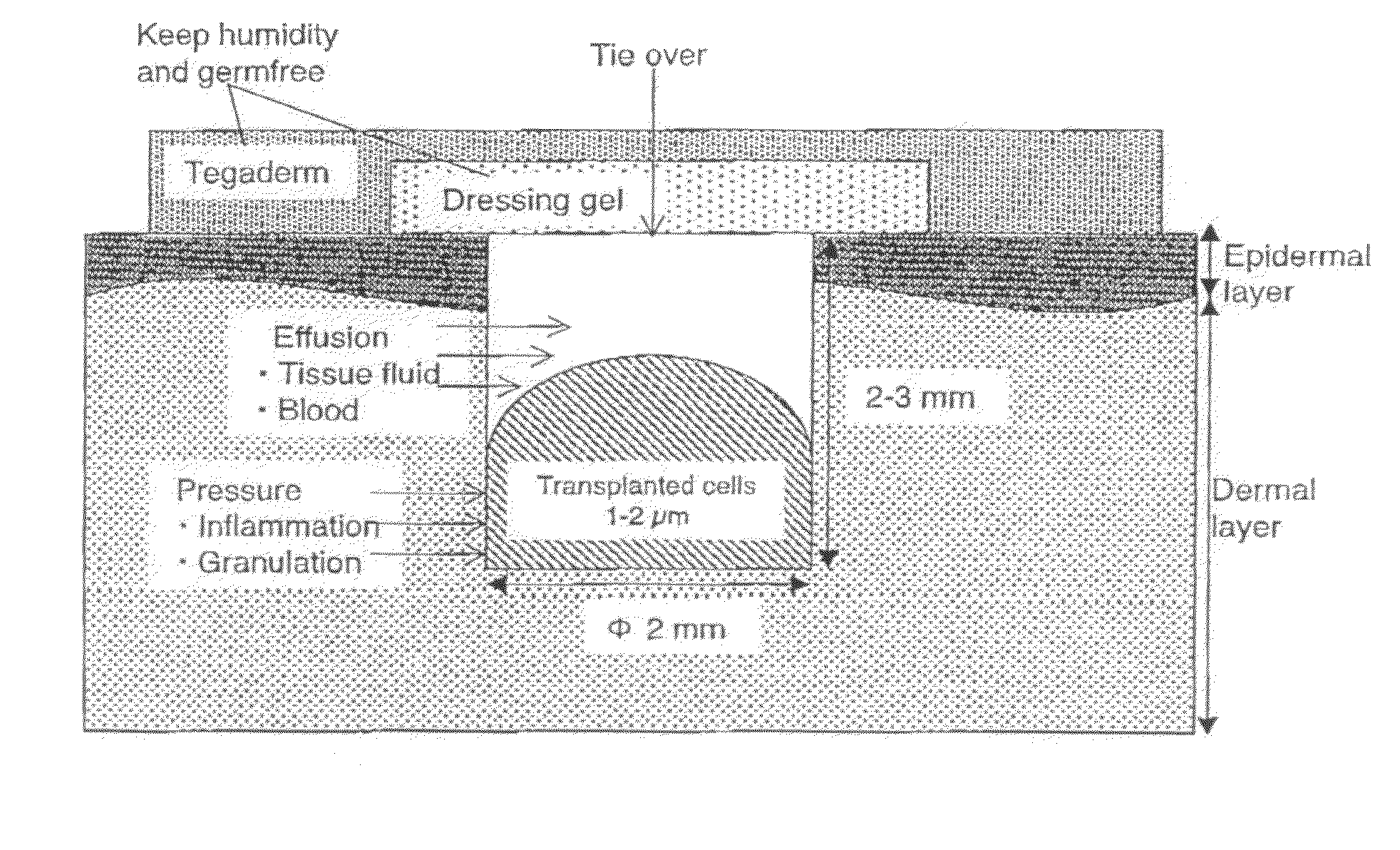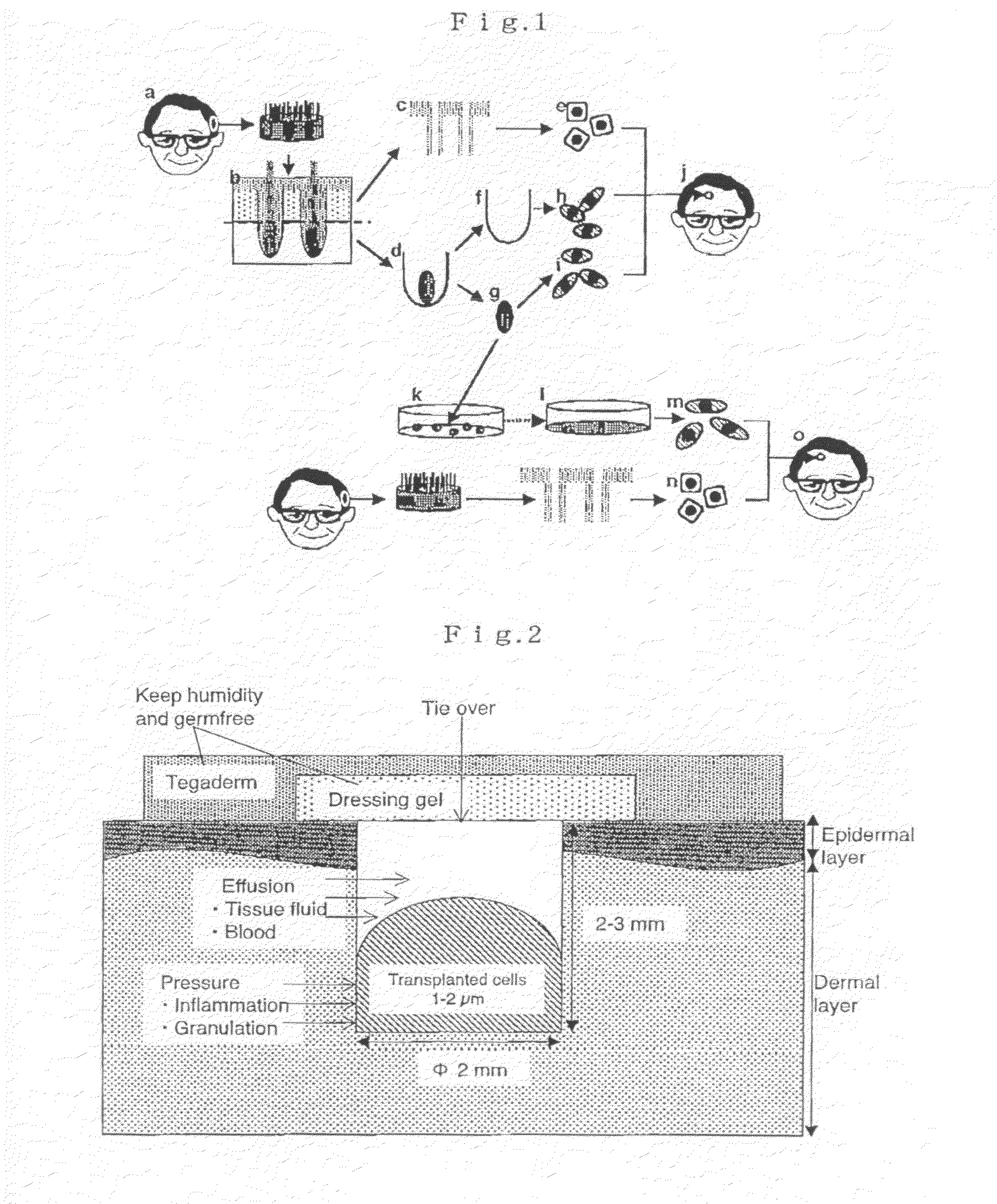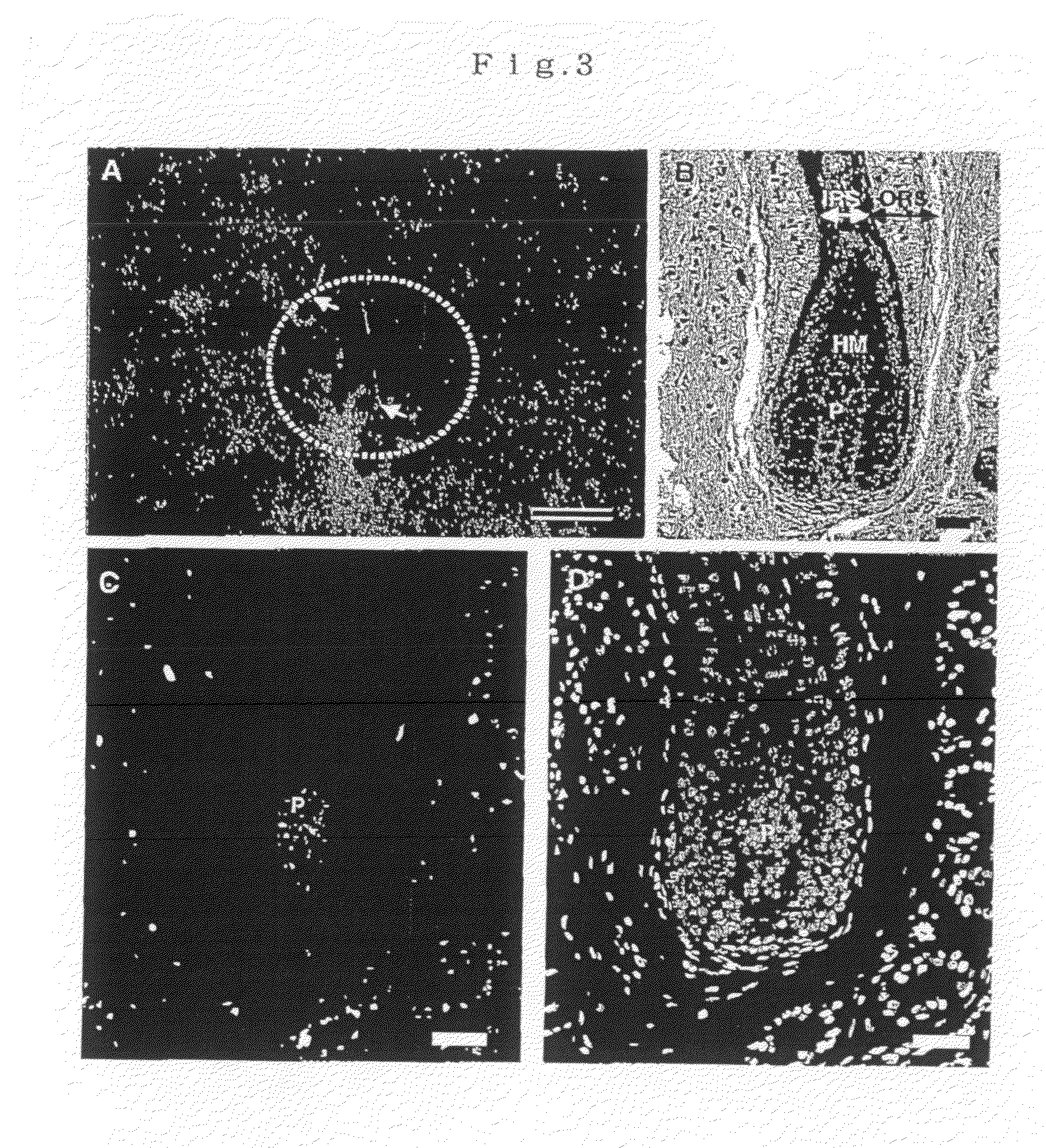Hair growth method
a hair growth and hair technology, applied in the field of hair growth methods, can solve the problems of high invasiveness of surgical methods, insufficient supply of normal scalp tissue donors, and reduced number of healthy hair follicles or hair shafts, so as to promote hair growth induction and promote hair growth. the effect of follicle growth and significant promotion of hair growth
- Summary
- Abstract
- Description
- Claims
- Application Information
AI Technical Summary
Benefits of technology
Problems solved by technology
Method used
Image
Examples
example 1
1. Method
1-1. Preparation of Human Cells for Transplantation
[0092]Skin was collected from the hair-growing area of the back of the head of healthy male volunteers of 32 and 44 years age and subjected to autologous cell transplantation to the hairless area of the forehead. The cells used for the transplantation were separated from the site as shown by FIG. 1 and used after making into single cells by an enzymatic treatment. Details of the preparation of the cells will be mentioned as hereunder.
[0093]On the day of 4 weeks before the cell transplantation, scalp of 3 cm2 containing hair bulb was collected from the back of the head. The skin material for the operation was separated into the skin and subcutaneous tissue using a microknife. The skin tissue was treated at 37° C. for 1 hour with a 10% autoserum DMEM containing 2,000 units / ml dispase to separate into epidermis and dermis. Dermal tissue was finely cut into 1 mm squares, sown on a 3.5-cm plastic dish and subjected to a primary ...
example 2
1. Methods
1-1. Preparation of Cells for Transplantation
[0099]Dermal papilla cells having a hair growth inducing ability and epidermal cells having a hair growth differentiating ability were prepared from the skin of newborn Fischer rat of two days age after birth. The newborn Fischer rat was sacrificed by decapitation and front and back limbs and tail were excised whereby only a trunk part was remained. Skin of the trunk part was exfoliated, sterilized with Isodine and 70% ethanol, washed with a physiological saline solution and stored at 4° C. until it is actually used. Subcutaneous tissue adhered to the skin of the newborn was detached by a micro-knife under a stereoscopic microscope in an aseptic environment. Incidentally, all steps thereafter were aseptically carried out in a clean bench or in an aseptic instrument.
[0100]The skin tissue was cut in stripes each being in about 3 mm width and 10 mm length and treated at 4° C. for one night in dispase dissolved to become 1,000 units...
example 3
1. Methods
1-1. Isolation and Incubation of Whisker Papillae and Dermal Sheath of Rat
[0109]A male Fischer rat of six weeks age was sacrificed by anesthetizing with diethyl ether and the cheek was excised. The excised cheek was sterilized with Isodine (Meiji Seika) and 70% ethanol and washed with a physiological saline solution. Dermal papillae were carefully isolated from the excised hair follicles using a fine tweezers and sown on a 35-mm incubation dish (manufactured by Becton Dickinson). A primary culture was conducted for 2 to 3 weeks on a Dulbecco-modified Eagle's medium containing 10% fetal bovine serum to which FGF 2 was added (DMEM 10) and the medium was exchanged every five days. After the primary culture, subcultures were conducted every seven to ten days. For the transplantation, cells of 6 and 39 passages were used.
[0110]Male adult EGFP transgenic Wistar rat (K. K. Wyeth Laboratories) was sacrificed by anesthetizing with diethyl ether and its cheek was excised. The excise...
PUM
| Property | Measurement | Unit |
|---|---|---|
| depth | aaaaa | aaaaa |
| depth | aaaaa | aaaaa |
| length | aaaaa | aaaaa |
Abstract
Description
Claims
Application Information
 Login to View More
Login to View More - R&D
- Intellectual Property
- Life Sciences
- Materials
- Tech Scout
- Unparalleled Data Quality
- Higher Quality Content
- 60% Fewer Hallucinations
Browse by: Latest US Patents, China's latest patents, Technical Efficacy Thesaurus, Application Domain, Technology Topic, Popular Technical Reports.
© 2025 PatSnap. All rights reserved.Legal|Privacy policy|Modern Slavery Act Transparency Statement|Sitemap|About US| Contact US: help@patsnap.com



